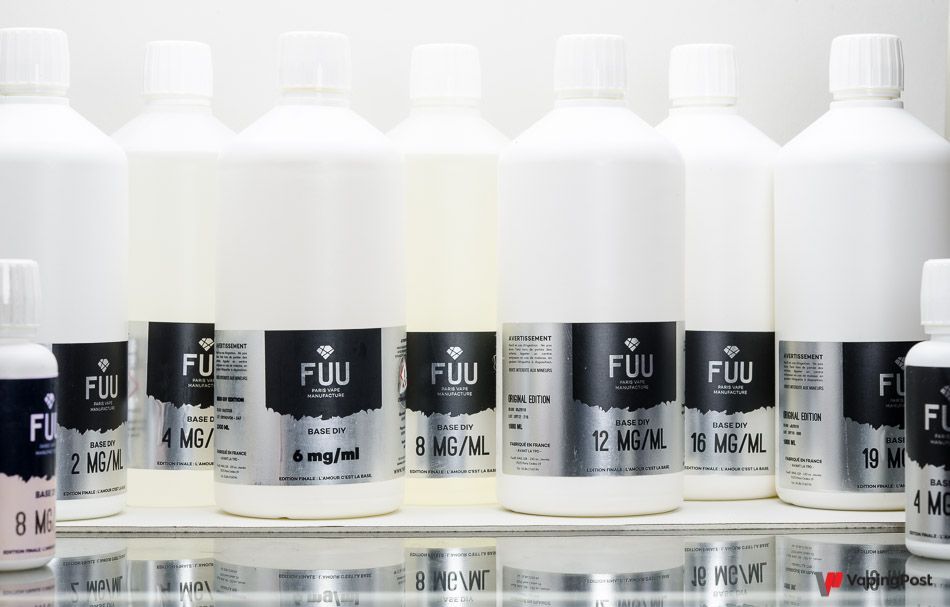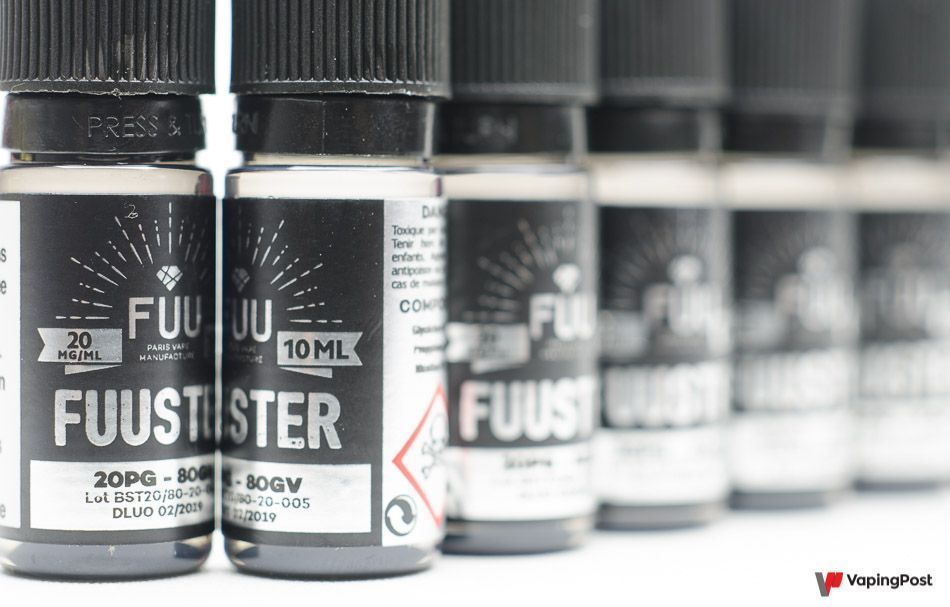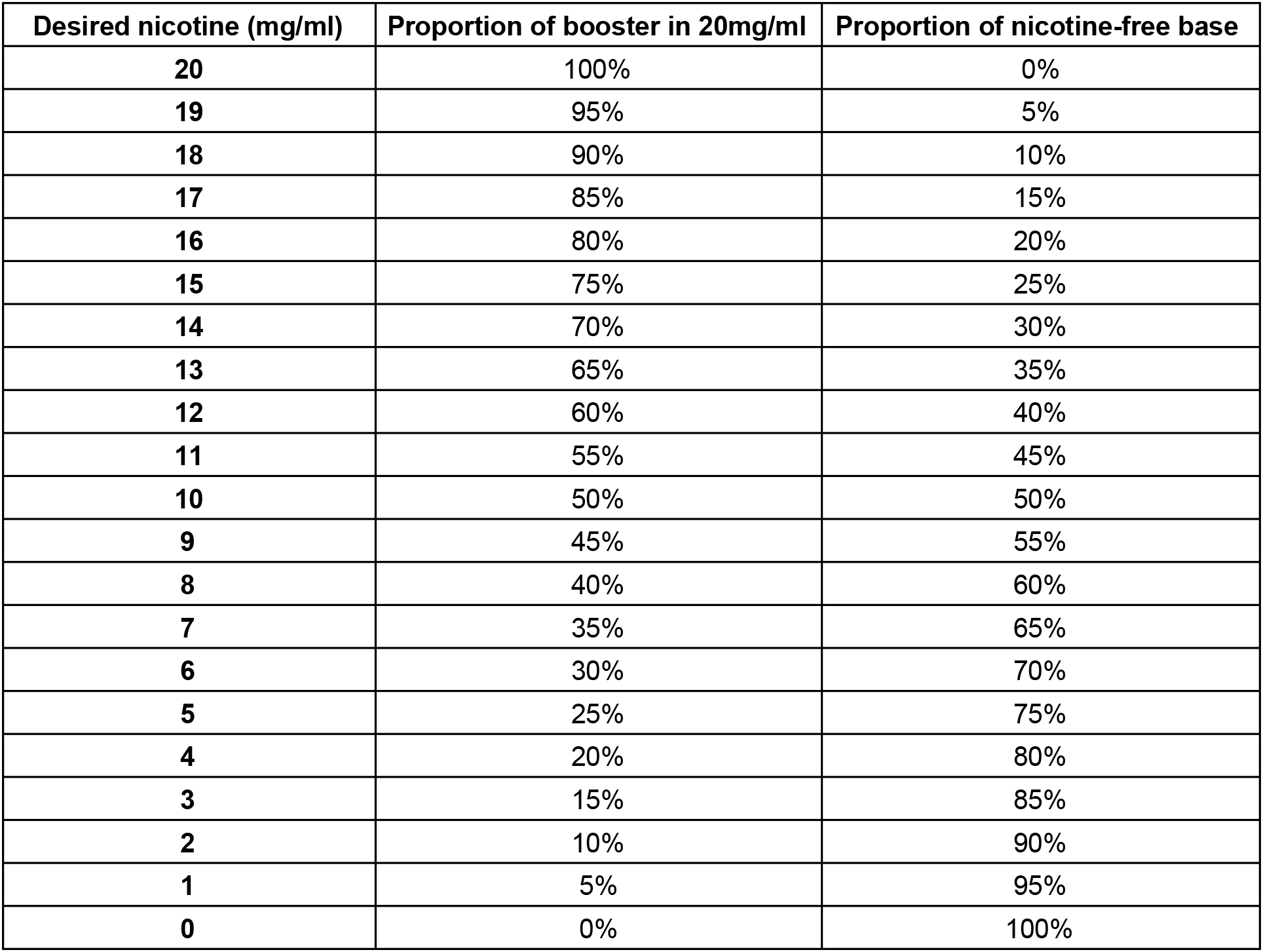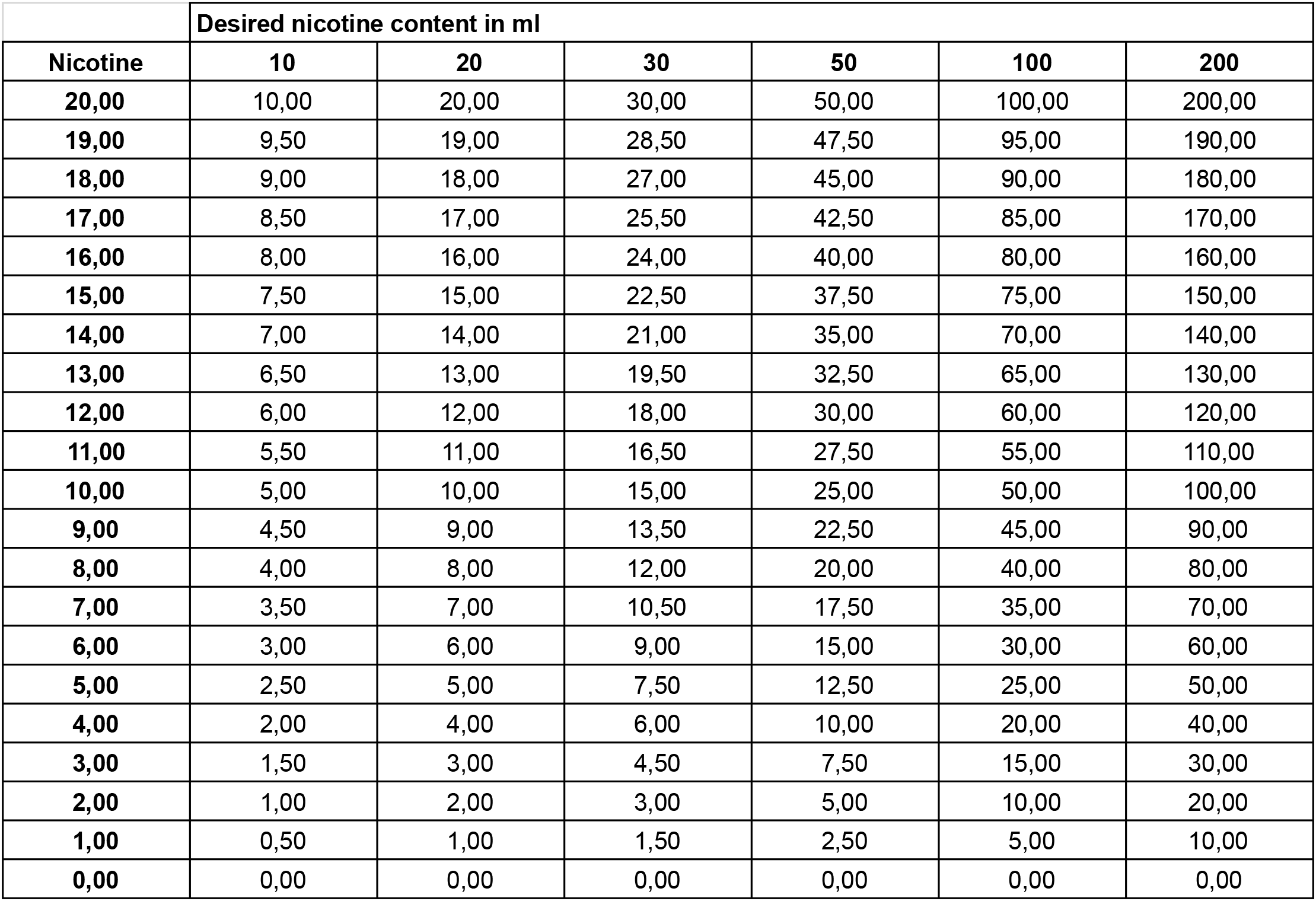Nicotine boosters
As of May 2016, DIY bases are sold without nicotine. To add it, you need to use boosters, 10 ml bottles containing 20 mg/ml. We will explain how to use them simply and easily.
As of May 2016, DIY bases are sold without nicotine. To add it, you need to use boosters, 10 ml bottles containing 20 mg/ml. We will explain how to use them simply and easily.
 Until May 2016, it was just as straightforward to use a base containing nicotine as a base without nicotine. This was simply because it was still possible to purchase a ready-to-use base with a nicotine content of your choice in the capacity that you wanted. To use a 50%PG/50%VG base containing 6 mg/ml nicotine without complicating your life, you simply needed to buy it, all the capacities were available from 10 ml to 1 litre or more.
Until May 2016, it was just as straightforward to use a base containing nicotine as a base without nicotine. This was simply because it was still possible to purchase a ready-to-use base with a nicotine content of your choice in the capacity that you wanted. To use a 50%PG/50%VG base containing 6 mg/ml nicotine without complicating your life, you simply needed to buy it, all the capacities were available from 10 ml to 1 litre or more.
Since order No. 2016-623 of 19 May 2016 in France and other similar legislation elsewhere in Europe, the famous TPD means that we can now look at the bottles from the above photo with nostalgia. Liquids containing nicotine can no longer be sold in capacities greater than 10 ml, and must have a nicotine content less than or equal to 20 mg/ml.
In sum, no liquid or base can have a nicotine concentration greater than 20 mg/ml, and once it contains nicotine, it can only be sold in bottles of no more than 10 ml. This gives rise to two possible scenarios:
 As one of the main benefits of DIY liquids is being able to make larger quantities of liquid, since the TPD came into force, manufacturers have established a de facto standard, the “booster”. This consists quite simply of a 10 ml bottle of base with a nicotine content of 20 mg/ml, the maximum that is now authorised. In and of itself, it would be possible to sell 10 ml bottles in different nicotine dosages, but the cost of production and packaging is a disincentive.
As one of the main benefits of DIY liquids is being able to make larger quantities of liquid, since the TPD came into force, manufacturers have established a de facto standard, the “booster”. This consists quite simply of a 10 ml bottle of base with a nicotine content of 20 mg/ml, the maximum that is now authorised. In and of itself, it would be possible to sell 10 ml bottles in different nicotine dosages, but the cost of production and packaging is a disincentive.
If manufacturers are only making 10 ml bottles anyway, they might as well make them as cost-effective for the consumer as possible. Therefore, the principle consists of adding a certain amount of booster to your nicotine-free base, by adjusting the proportion of one in relation to the other to achieve the desired nicotine dosage. For example, to make a liquid containing 10 mg/ml of nicotine, simply mix 50% base with 50% booster.
Therefore, boosters all have a nicotine dosage of 20 mg/ml and are sold in 10 ml bottles, but you can find them with different PG/VG ratios. The most straightforward method is obviously to use the same ratio as that of your base so as not to modify it when adding the booster. If you mix a 50%PG/50%VG base in equal proportions with a 100%PG booster for example, you end up with a 75%PG/25%VG nicotine base, the booster adding a considerable amount of PG to the mixture.
As such, those who vape with 20 mg/ml can use boosters directly as a DIY base, by choosing the desired PG/VG ratio. This involves buying large quantities of boosters, while lamenting the attractive prices that you used to be able to get with 1 litre bottles, but sparing yourself the dilution step in the nicotine-free base.
 The question remains as to how many boosters you add to your base to reach the desired nicotine dosage. You can use one of the many online calculators available on the Internet, or do the sums yourself, it is relatively quick and easy.
The question remains as to how many boosters you add to your base to reach the desired nicotine dosage. You can use one of the many online calculators available on the Internet, or do the sums yourself, it is relatively quick and easy.
The method suggested here allows you to make any quantity of base with any nicotine content, but it requires some calculations. If you are looking for an easier solution, some manufacturers offer much easier kits which are discussed in a separate article.
The booster contains 20 mg/ml of nicotine. If you want 10 mg/ml, divide the content in half, and therefore dilute half of the booster with the base, giving 50% booster and 50% base. To determine the proportion between booster and base according to the desired nicotine content, you simply need to do the following calculation:
Proportion of booster = 1/(nicotine content of booster / desired final nicotine content)
To spare you having to calculate whenever you make a mixture, a table of results for all nicotine contents is given below:  To make a base containing 7 mg/ml of nicotine, simply look at the relevant row in the table to see that you will need to mix 35% booster with 65% nicotine-free base. And to make, for example, 127 ml of base containing 7 mg/ml of nicotine, you will need to mix 35% of 127 ml, or 44.45 ml of booster with 65% of 127 ml, or 82.55 ml of DIY base.
To make a base containing 7 mg/ml of nicotine, simply look at the relevant row in the table to see that you will need to mix 35% booster with 65% nicotine-free base. And to make, for example, 127 ml of base containing 7 mg/ml of nicotine, you will need to mix 35% of 127 ml, or 44.45 ml of booster with 65% of 127 ml, or 82.55 ml of DIY base.
These figures can obviously be rounded to 44 and 83 ml, there is no need to fuss over hundredths of a millilitre.
And to make your task even easier, a table for some dilutions according to the desired amount of base and nicotine is given below.  Each row corresponds to a desired nicotine content, and each column to a quantity of base to be made. For example, to make 50 ml of base containing 6 mg/ml of nicotine:
Each row corresponds to a desired nicotine content, and each column to a quantity of base to be made. For example, to make 50 ml of base containing 6 mg/ml of nicotine:
You can also easily make 300 ml of this base containing 6 mg/ml by adding the corresponding quantities of base. 300 ml is 100 ml + 200 ml. Therefore, you take 30 ml + 60 ml of booster, i.e. 90 ml, and top up with nicotine-free base to obtain 300 ml of the final mixture, i.e. 210 ml in this case.
It takes a little brain training, but you quickly get the hang of it. The advantage of making larger quantities of base soon becomes obvious, you will need to do these calculations less often.
We have prepared a series of articles examining DIY liquids: